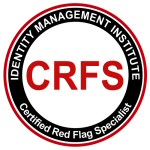Identity Theft Industry Analysis
October 2013
This article summarizes the results of a 2013 identity theft industry analysis. The research project was initiated by an equity investment firm which engaged a research company to conclude whether LifeLock which is the leading identity theft protection company in the US can maintain its lead in a crowded market. The research firm then engaged a few industry professionals, customers and financial institutions for interviews as part of its research techniques. The analysis also focused on the current and future market trends.
Before discussing the specific results of the research I want to express a few personal opinions related to the market. As you know, the identity theft solutions industry is somewhat crowded and consumers must select identity theft services from a sea of identity theft protection, monitoring and resolution companies which often provide the same services under different brands and pricing. As a result, we are starting to witness the beginning of a Mergers and Acquisitions (M&A) cycle in our industry such as the latest Equifax acquisition of TrustedID. I predict that these M&A activities will continue to shape the industry for months and years to come mainly for entering the enterprise market as well as accessing technology, data, process expertise, and network of potential clients. One of the results of the research confirmed my thoughts on the lack of distinct and complete products in the market.
Below you will find the summary results of the research:
* All eight sources within the ID theft protection sector described LifeLock Inc. (LOCK) as the industry’s leader. However, LifeLock’s lead position and customer growth rate are threatened by direct competitors as well as by credit agencies, banks, insurance companies and mobile startups. Seven of the eight said the sector has room to grow in both the consumer and enterprise fronts despite being already crowded and increasingly commoditized.
* All eight industry sources said LifeLock’s early entry into the field and superior marketing have been keys to its success; otherwise, it lacks distinction in product and pricing. Other standalone companies have been able to benefit from LifeLock’s marketing prowess and to compete head to head on product and price.
* B2B enterprise sales are an area of potential growth, including for LifeLock as it grows its subscriber base in this sector. However, LifeLock lacks the more cohesive institutional relationships of its competitors, whose products often are included in banks’ services.
* Two sources representing institutional financial service providers do not see strong potential in offering third-party theft detection; doing so would offer negligible value to customers and little profit to institutions. Still, both sources said offering third-party services to ID theft victims could provide an extra layer of perceived protection at a relatively low cost to institutions.
* A survey of 49 customers of ID theft protection services revealed that most selected their provider based on recommendation, an experience involving ID theft or a desire to be proactive in ID protection. LifeLock customers responded similarly; none cited price or features as being key to their purchase decision. If they were to seek a new provider, survey respondents said they would turn to another ID theft protection service rather than a bank or a credit card or insurance company.
Read the 2012 identity theft industry analysis and trends.








